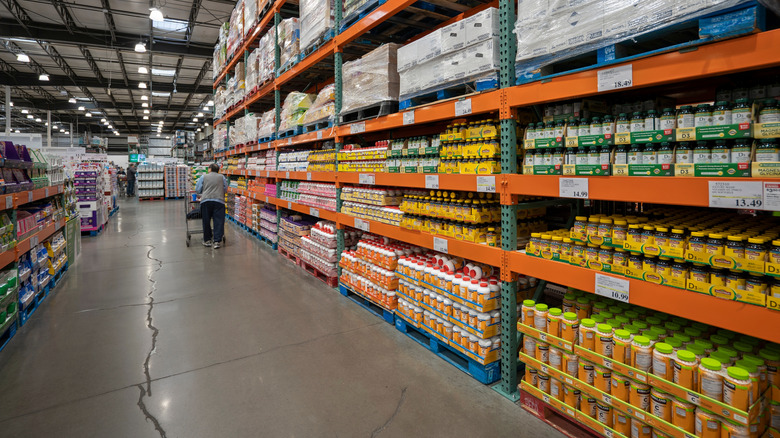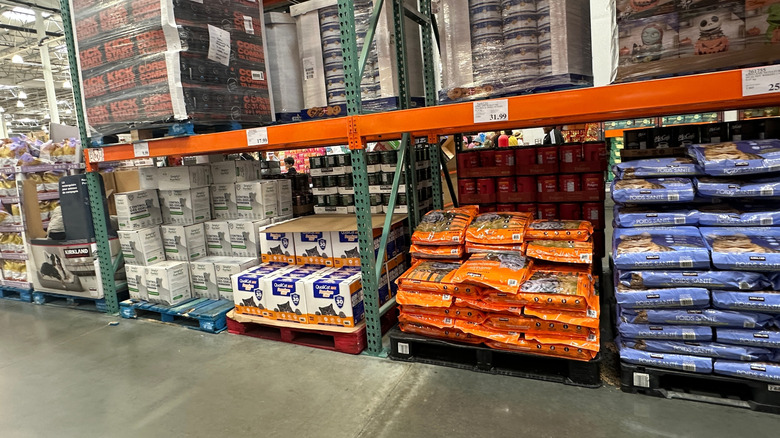Why You Can Ignore Costco's Yellow Circle Stickers
There's an art to decoding Costco price tags, with the actual prices themselves indicating different things, the green ones signifying organic products, and it even turns out that specific dates on the tags matter, too. But if you're an eagle-eyed shopper, you might have noticed round yellow stickers hanging out on the tags and wondered what those meant. Does it relate to the colors on a traffic light, like a "slow your roll," this item isn't going anywhere any time soon? Or, does it have something to do with the yellow highlight that accompanies the words "Instant Savings" on some tags? Actually, it's nothing for us, the customers, to worry about; it's solely for employees when they're taking inventory.
As it turns out, a yellow circle sticker is a signal during inventory that the item should be weighed, versus counted by how many of the item are currently on the floor. So, for example, it might make more sense for employees to inventory ground beef by how much exists in pounds, versus how many individual packages there are in the cooler. If someone misses the round yellow sticker — or someone forgets to tag an item with one — it's not the end of the world, but it does ultimately mean more work for someone.
Another Costco price tag code that isn't for customers
There is actually something akin to a secret language when it comes to the codes on Costco price tags. While some of it can be useful for customers (like the asterisk indicating an item won't be carried any longer after what's left runs out, so you'd better stock up), a lot of it, like the yellow round sticker, is just for employees. Another good example of a non-customer-concerning code is the letter, plus two numbers separated by a forward-slash combo, like ME 9/12.
The letter actually tells the employees where the product should be located. In this case, ME (or sometimes just M) stands for mandatory end cap, while an F stands for fence mandatory, which places the product near the doors, and an H stands for high focus area, a centrally located place where a lot of customers pass by. Finally, an S is for split focus, which also places a product in a high-traffic area, but not where it usually sits.
That leaves the number combination, which is actually a date. It tells the employees how long an item should stay in the given location. These codes are necessary because some brands pay for their products to be specifically placed in certain spots around the store, and it keeps employees from moving the items from their paid-for area. Luckily, this, and the yellow circles, don't have to be worried about when you shop for that next deal.


